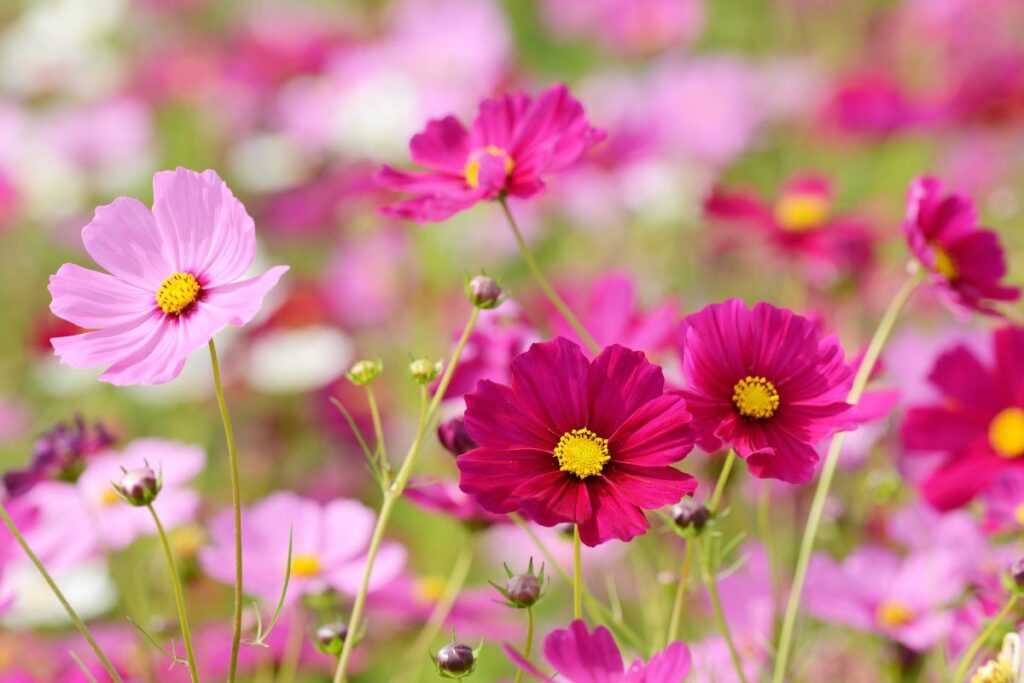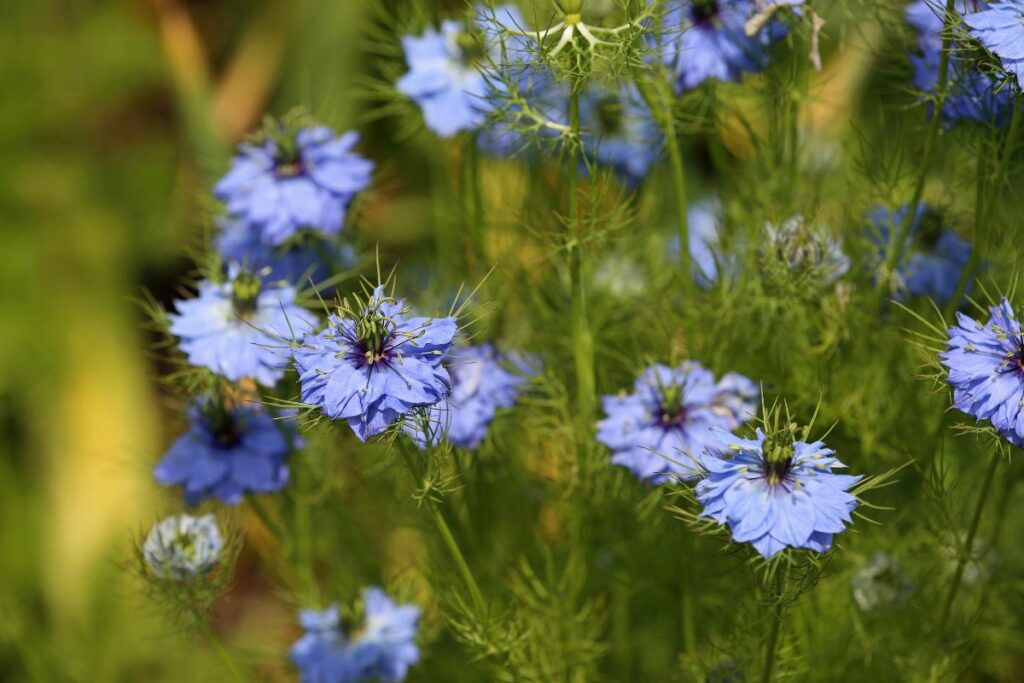Want a low-maintenance garden?
Plant these 12 wonders and let them do the work for you!
These plants will self-seed and spread all over your yard, giving you a lush garden with minimal effort.
Ready to find out which plants make the list?
Let’s get started!
Grasping the Lifecycle of Autonomous Seeders
- Autonomous Seeders: Plants capable of self-propagation.
- Seed Dispersal: Natural falling and germination without human aid.
- Mechanisms: Adaptations for spreading seeds, like by wind or animals.
- Natural Cycle Imitation: Mirrors wild plant reproduction for species continuity.
Plants in this category thrive by literally planting their future, ensuring their lineage persists in suitable environments. They are nature’s own gardeners, subtly crafting their own plots.
Advantages of Plants that Propagate Themselves
Ease of Care: Once these plants settle into your garden, they demand very little attention. They naturally acclimate to your area’s climate and soil, usually thriving without extra watering, feeding, or pest management.
Economical: Investing in plants that reseed themselves pays off. After planting them once, they continue to regenerate, sparing you the expense of purchasing seeds or young plants each season.
Authentic Charm: These types of plants bring a genuine touch of wilderness and ease to your garden space. They create a relaxed ambiance, enhancing the garden’s appeal with an effortless grace.
Tailored Hardiness: As they acclimate over time to your garden’s specific conditions, these plants often exhibit a robustness and resilience that outperforms non-native varieties.
Diversity Promotion: Your garden becomes a hub for various pollinators and beneficial wildlife thanks to the inviting habitat created by these plants. This not only enriches your garden’s ecosystem but also aids in its overall health.
Sustained Flowering: Enjoy a garden full of life for longer periods, as these plants often prolong the blooming season. This sequence of growth ensures that as one plant completes its life cycle, another arises to maintain the garden’s vibrancy.
Garden Dynamics: With self-propagating plants, expect an ever-changing landscape. Unpredictable groupings and organic arrangements deliver a fresh and distinct visual display on a continual basis.
Exceptional Self-Propagating Flora
Love-in-a-Mist: This plant graces the garden with its feathery greenery and soft-toned blue or white petals. It flourishes in both bright and dimmer lit areas.
- Zones: 2-10
- Light: Full sun to partial shade
Californian Poppy: Displaying a lively mix of orange, yellow, or red, these flowers are well-suited to bright, arid environments, instantly enhancing the vibrancy of any space.
- Zones: 6-10
- Light: Full sun
Cosmos: Lace-like flowers ranging from shades of pink to white and violet, Cosmos invite diverse pollinators while offering a touch of refined beauty.
- Zones: 2-11
- Light: Full sun
Spider Flower: Noteworthy for its towering spikes with distinctive spidery blooms of pink, white, or lavender, adding architectural interest.
- Zones: 2-11
- Light: Full sun to partial shade
Larkspur: Features elegant, towering spires dotted with flowers that come in a spectrum of blues, purples, pinks, and whites—ideal for creating vertical layers in your garden.
- Zones: 2-9
- Light: Full sun
Forget-Me-Nots: Offering a charming blue floral blanket, these plants are well-suited for shaded areas or creating a woodland garden appeal.
- Zones: 3-8
- Light: Part shade to full shade
Borage: Showcases vivid blue, starry flowers with leaves that can be harvested for culinary use, providing both visual allure and practicality.
- Zones: 2-11
- Light: Full sun to partial shade
Sweet Alyssum: With its sweet fragrance, it presents clusters of white, pink, or purple flower mounds—an excellent choice for edging, containers, or cascading from baskets.
- Zones: 4-9
- Light: Full sun to partial shade
Poppies: A diverse genus boasting stunning flowers in vivid hues. Depending on the variety, they can accommodate a broad range of climates.
- Zones: Variable (e.g., Oriental poppies 3-8)
- Light: Full sun
Black-Eyed Susan: Their golden-yellow petals and dark central eyes are a magnet for butterflies and beneficial insects.
- Zones: 3-9
- Light: Full sun to light shade
Purpletop Vervain: Thin stems crowned with clusters of petite purple blossoms contribute an element of lightness and movement.
- Zones: 7-11 (often annual elsewhere)
- Light: Full sun
Hollyhocks: These towering stalks of abundant blooms come in various hues, infusing your garden with old-world, cottage grace.
- Zones: 3-9
- Light: Full sun to light shade
These plants not only add beauty and structure to your garden but also propagate themselves, providing a continuity of splendor without requiring constant replanting.



how do I get these plants or the seedsmargaret
how do I get these seeds
Love these flowers. Self seeding plants are wonderful. Zinnia’s a petunias were the plants that re seeded for me. It has been so hot this year my garden has really suffered. SW Oklahoma too hot.
When fo plants these seeds? and do you just buy them from like .
.home Depot? do you have the entire list to send me?